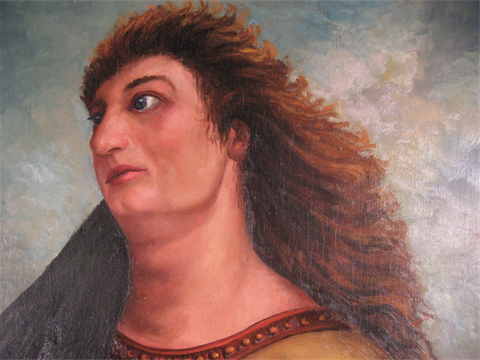Heritage Artworks & Objects by Italian P.O.W.s, Cowra

22 to 24 March 2024
The Cowra POW Camp housed Prisoners of War from Italy and Japan as well as Indonesian, Korean, Taiwanese and Javanese internees. The first group of prisoners were Italians captured by Allied Forces in North Africa. From 12,000 sent to Australia 2,000 were sent to Cowra. They arrived on 15 October 1941 and helped build areas of the camp. The overall numbers of Italian POWs that went through Cowra may never be known but it is estimated at about 5,000. During the operation of the POW camp it became apparent that many of the Italian POWs were easy go-ing and just wanted to work hard and see their time out.
During their long period in Cowra, many worked on farms in and around the Cowra district, others shared their artistic talents with the guards and local community. After many years we have a much better understanding of the importance of the Italians role in our district and their subsequent post war contribution to Australia generally.
The Italian POWs spent their time in workshops making toys, chess sets and picture frames. They also created sculptures that reminded them of their homeland. The POWs performed operas, staged plays and formed bands. Somehow instruments were found and loaned to the POWs and make-shift stages were built to accommodate the performances. Many Cowra residents can remember listening to the performances filled with music and singing, as they sat on the hills surrounding the camp.
Artists included Eliseo Pieracinni and Carlo Vannucci, both from the village of Viareggio in Lucca. They both arrived at the Camp after internment in India, on 26/4/44. Pierraccini's occupation was listed as "Clerk" and Vannucci's as "Decorator". Pierraccini (the older of the two) appears to have been the more prolific painter.
There was a Catholic priest named Padre Lenti, who is credited as being instrumental in the construction of the Italian Chapel at the Camp. The two altar panels in this exhibition (now in the Gallery collection of Italian POW artworks) were painted by the men from Viareggio, and signed with their names and dated ITAL. P.W. 7-9-46. The panels were recovered from the Catholic Chapel at the camp site when it was disassembled after the War in 1947 and handed to the parish priest at St Raphael’s Catholic Church. They were eventually purchased from a local resident by Cowra Shire Council.
In 2004 the two altar panels were viewed by the then Head Curator at the Australian War Memorial and Senior Curator, Australian Prints and Drawings, National Gallery of Australia. Both curators spoke highly of the panels and in particular of their significance to Australian art history because of the combination of the figures rendered in a traditional Italian religious style depicting Australian flora, landscape and the barbed wire of the POW Camp. It is this fusion of elements that make the altar panels unique.
Image credit: Altar Panel (detail) 1946, oil paint on plywood, 1870 x 770mm by Carlo Vannucci.
Presented in association with the Cowra Festival of International Understanding
